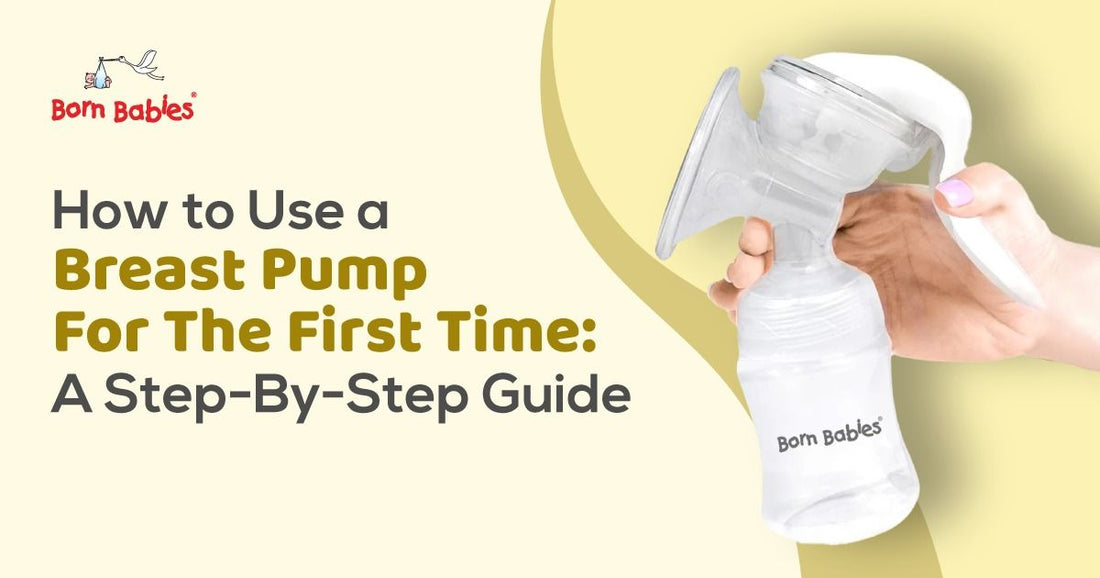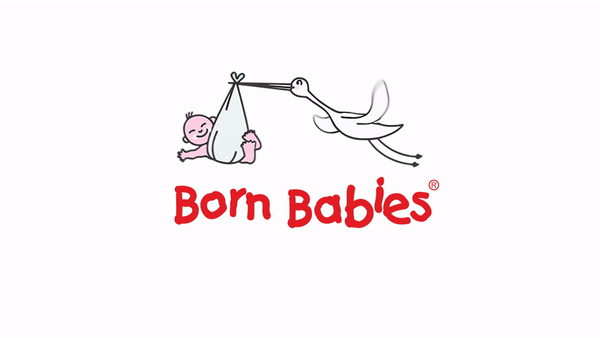Are you nervous about using a breast pump for the first time? Learning how to use a breast pump for the first time can be daunting, but our step-by-step guide simplifies the process. From assembling your pump to storing breast milk safely, this blog covers everything you need to know. Learn the practical tips to make your pumping experience smooth and stress-free.
Let’s Begin
As a new mom, breastfeeding has its own set of challenges and joys. One significant aspect that many new mums encounter is using a breast pump for the first time. The process might seem intimidating initially, but with the right guidance, it becomes manageable and becomes part of your routine. This blog aims to demystify how to use a breast pump for the first time, ensuring you feel confident and prepared.

Why You Might Need a Breast Pump
Breast pumps offer several benefits. They allow you to store milk for later, which is helpful if you're returning to work, have a busy schedule, or want to share feeding duties with your partner. Pumps can also relieve engorgement and help maintain your milk supply if your baby isn't feeding well.
Types of Breast Pumps
Knowing the types of breast pumps is essential before using one. Here are the main types:
- Manual Pumps: Require you to squeeze a handle to create suction and express milk.
- Electric Pumps: Powered by a motor, providing automatic suction for a faster and often more comfortable process.
Preparing to Use Your Breast Pump
- Cleaning and Sterilising: Ensure all parts of the pump that come into contact with milk are thoroughly cleaned and sterilised. Boil them in water for about 10 minutes or use a microwave steriliser.
- Creating a Comfortable Space: Find a quiet, comfortable space to relax. Stress can hinder milk flow, so a calm environment is crucial. A comfortable chair and a glass of water can make a big difference.
How to Use a Breast Pump for the First Time
Step 1: Assemble the Pump
Follow the instructions to assemble your breast pump. Each type has specific steps, so it's essential to read the manual carefully. Ensure all parts are correctly fitted to avoid any leakage.
Step 2: Wash Your Hands
Before handling the pump or your breasts, wash your hands with soap and water. This helps prevent any potential contamination of the milk.
Step 3: Position the Breast Shields
The breast shields (flanges) should fit snugly around your nipple. If they are too large or too small, you may experience discomfort or reduced milk flow. Most pumps come in different sizes, so choose the one that fits best.
Step 4: Start Pumping
For manual pumps, start by squeezing the handle rhythmically. For electric pumps, begin with a low suction setting to stimulate let-down. Once the milk starts flowing, you can increase the suction to a comfortable level.
Tips for Effective Pumping
- Relax and Stay Calm: Stress can significantly impact milk flow. To help you relax, try deep breathing exercises and listen to calming music.
- Massage Your Breasts: Massaging your breasts before and during pumping can help stimulate milk flow and ensure that you are removing any milk ducts.
- Stay Hydrated: Drinking water before and during pumping sessions can help maintain your milk supply and keep you hydrated.
- Label the Milk: Label each container with the date and time the milk was expressed. This helps you use the oldest milk first and ensures it's safe for your baby.
- Refrigerate or Freeze: Breast milk can be stored in the refrigerator for up to 4 days or in the freezer for up to 6 months.
- Use Clean Containers: Always store your expressed milk in clean, sterilised containers. You can use glass bottles, BPA-free plastic bottles, or milk storage bags specifically designed for this purpose.
- After Each Use: Rinse the pump parts that come into contact with breast milk in cool water, then wash them in warm, soapy water. Then, sterilise the pump parts by boiling them for 10 minutes or using a microwave or steam steriliser. Rinse thoroughly and allow them to air dry on a clean towel.
Common Concerns and Troubleshooting
- Pain or Discomfort: If you experience pain while pumping, it may be due to incorrect flange size or suction settings. Adjust as needed and consult a specialist if the problem persists.
- Low Milk Supply: Pumping more frequently and ensuring proper hydration and nutrition can help increase your milk supply. Sometimes, it might take a few days for your body to adjust to the pump.
Nurture Every Precious Moment with Born Babies
At Born Babies, we understand that every moment with your little one is precious. From the first breath to the first smile, we are here to support you through all the joys and challenges of parenthood. Shop from us to find everything you need to feed your baby. From baby feeding bottles and baby breast pumps to nursing pillows and bibs, we have carefully selected products that ensure the best for you and your baby. Our collection is designed to make feeding time a joyful and stress-free experience.
Summing Up
Using a breast pump for the first time can seem challenging, but with practice, it becomes second nature. Remember to stay calm, be patient, and take care of yourself during this process. Following this step-by-step guide on how to use a breast pump for the first time will help you and your baby enjoy the process and the benefits of expressed breast milk.
How To Use A Breast Pump: FAQs
1. How do I prepare to use a breast pump for the first time?
To prepare for using a breast pump for the first time, ensure that all parts are clean and sterilised, find a comfortable and quiet space, and have a glass of water and some calming music to help you relax.
2. What types of breast pumps are available?
There are two main types of breast pumps: manual pumps, which require you to squeeze a handle to create suction, and electric pumps, which use a motor to provide automatic suction.
3. How do I assemble a breast pump?
Follow the instructions provided with your specific breast pump model. Typically, this involves attaching the breast shields to the pump body, connecting the tubing, and ensuring all parts are securely fitted.
4. How do I position the breast shields correctly?
Place the breast shields over your nipples so that they fit snugly but comfortably. The nipple should be centered in the tunnel of the shield to avoid discomfort and ensure effective milk expression.
5. How long should I pump each time?
Each pumping session typically lasts about 15-20 minutes per breast. However, the duration can vary depending on your comfort and milk flow.



